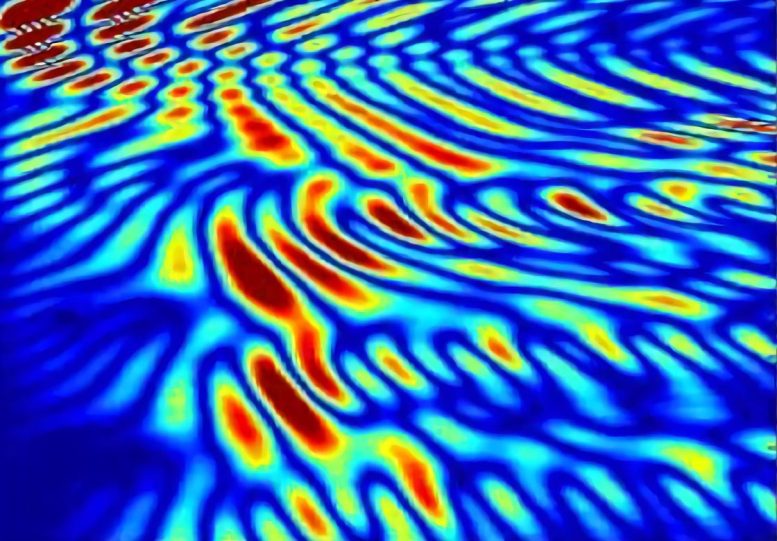
Two spectra of EEG-boosted beams showing how the Echo-7 team gained finer control over the beam from Phase I (left image) to Phase II (right image), thus demonstrating the viability of EEHG theory under realistic conditions. Credit: Echo-7 Team, SLAC
Physicists working on the Echo-7 experiment at SLAC’s Next Linear Collider Test Accelerator (NLCTA) reached a new milestone while taking steps towards creating a fully coherent X-ray laser beam. By reducing the ratio of energy modulation to energy spread, the team was able provide the first evidence that EEHG could indeed generate the higher harmonics necessary while preserving the integrity of the electron beam.
Many advanced laser technologies, such as laser spectroscopy, that use precise wavelengths of infrared, visible or ultraviolet laser light could benefit from using X-ray light as well. But to reach its full potential, that X-ray light must be just as coherent as the light from the optical lasers now in use – a requirement beyond current X-ray laser technology.
Now researchers at SLAC’s Next Linear Collider Test Accelerator (NLCTA) have reached a milestone in the Echo-7 experiment that marks an important step towards creating a fully coherent X-ray laser beam. The researchers described their results in a paper recently published in Physical Review Letters.
The Echo-7 project began in 2009 in response to SLAC beam theorist Gennady Stupakov’s ideas for imprinting – or “seeding” – an electron beam with laser light, and then manipulating the individual bunches that make up the beam to make X-rays instead of the ultraviolet light it would have originally generated – and do all this without destroying the laser’s coherent imprint. This technique was dubbed echo-enabled harmonic generation (EEHG).
The imprint of the seed laser is seen in the wavelengths of light the electrons generate: They’re always harmonics, or precise fractions, of the original beam. The higher the harmonic number, the shorter the wavelength; a harmonic number of 2 means a wavelength half as long, a harmonic number of 3 means a wavelength one third as long, and so on.
“EEHG has remarkable frequency up-conversion efficiency such that one can generate fully coherent X-rays directly from an ultraviolet seed laser,” said Dao Xiang, a SLAC accelerator physicist who has played a leading role in the project since the beginning. “However, there is no free lunch.” Implementation of EEHG is extremely challenging “because it involves a long-term memory of beam phase-space correlation.” In other words, the Echo-7 team must preserve some very delicate properties of the electron beam as they take it apart and put it back together.
The team adopted a phased strategy in order to demonstrate the technique. During Phase I in 2010, they hit their first milestone: boosting their output beam to the fourth harmonic of the seed laser beam. This result demonstrated that EEHG works – the Echo-7 team could, indeed, take apart a beam of light and reassemble it into one having a shorter wavelength.
In 2011’s Phase II, the team upgraded the NLCTA facility, which enabled them to further reduce the ratio of energy modulation to energy spread – packing the electrons into even tighter micro-bunches – while at the same time generating the seventh harmonic wavelength of the seed laser, which pushed the beam farther into the ultraviolet. This result – along with giving the project its name – provided the first evidence that EEHG could indeed generate the higher harmonics necessary while preserving the integrity of the electron beam, as Stupakov had predicted.
“However, there is still a long way to go to reach X-rays,” Xiang said: Jumping from ultraviolet to X-ray energies requires generating a beam with a wavelength 50 to 100 times shorter than that of the original seed laser. During Phase III, the team will pursue EEHG into that much higher harmonic regime.
“In successfully completing the first two phases of the Echo-7 experiment, we’ve created a unique facility for accelerator and free-electron-laser R&D, as well as establishing a team of experts who can execute such a program. If we have additional funding for the next three years, we’ll be able to explore this technique in the very high harmonic regime, which will be crucial to realizing next-generation X-ray sources,” said Tor Raubenheimer, principal investigator of the Echo-7 project.
“NLCTA enables us to test EEHG in the high-harmonic regime with minimal investment, thanks to our existing hardware and radio-frequency sources,” said Carsten Hast, head of the Test Facility Department. The Echo-7 team expects to generate more echoes in the NLCTA tunnel, with frequencies several octaves higher than what has already been achieved. “Then we’ll need to rename the project to, maybe, Echo-75,” Hast said.
Reference: “Evidence of High Harmonics from Echo-Enabled Harmonic Generation for Seeding X-Ray Free Electron Lasers” by D. Xiang, E. Colby, M. Dunning, S. Gilevich, C. Hast, K. Jobe, D. McCormick, J. Nelson, T. O. Raubenheimer, K. Soong, G. Stupakov, Z. Szalata, D. Walz, S. Weathersby and M. Woodley, 11 January 2012, Physical Review Letters, Physical Review Letters.
DOI: 10.1103/PhysRevLett.108.024802


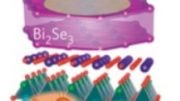

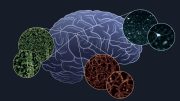

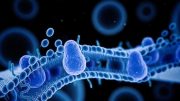
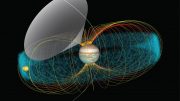

Be the first to comment on "Physicists at SLAC Are One Step Closer to Creating Fully Coherent X-rays"